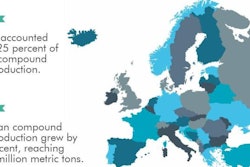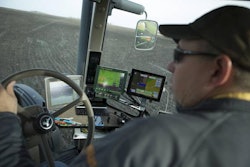
According to data provided by FEFAC members, compound feed production in the EU-28 in 2015 reached 157.3 million metric tons, which is 0.6 percent more than in 2014. While cattle feed production dropped by 0.7 percent, pig feed and poultry feed grew by 0.6 percent and 1.2 percent, respectively. Poultry feed thereby further enforced its leading position in EU feed production.
Feed costs remained low and even decreased compared with 2014. This was due to a good 2015 cereals harvest in the EU, both in terms of quantity and sanitary status, and a largely sufficient supply of oilseed meals globally, especially soybean meal. This compensated the still decreasing pig meat quotations to a certain extent, while pig meat production continued to increase by close to 4 percent in 2015.
Regarding cattle feed, the picture is, as usual, very contrasted across Europe, depending on weather conditions for forages production. The effect of the lifting of the quota regime, with a +2 percent milk delivery in 2015 vs. 2014, was hardly visible for the compound feed industry EU-wide, with the exception of Ireland and the Netherlands.
Finally, poultry feed production continued to grow, boosted by an increase per capita in meat consumption (+2.7 percent), which primarily benefited to poultry meat (+4 percent). As a consequence, poultry feed consolidated its position of leading segment of EU compound feed production, now well ahead of pig feed.
Poland and Spain have been the only well performing member states among the largest EU producing countries, with annual growth close to 4 percent. Germany recorded a significant decrease (-2.9 percent) after 5 consecutive years of growth, whereas the U.K. was set back by more than 4 percent, especially because of bad results in poultry feed. All other major producers – France, Italy and the Netherlands – saw limited changes in their production records.
Germany and Spain are shoulder to shoulder in their position as leading EU countries in terms of total compound feed production, well ahead France.
Forecast for 2016
FEFAC market experts are relatively pessimistic concerning industrial compound feed production in 2016. They foresee the upward trend on poultry feed demand to persist, though at a slower pace than in 2015 (+0.5 percent), but also a significant reduction in pig feed demand (-1.5 percent), in line with expert forecasts on pig meat production in the EU. Overall, this would lead to a 0.7 percent decrease in compound feed production in 2016 vs. 2015.
On the feed materials side, concerns regarding the quality of the EU cereals harvest 2016 due to the humid and cold weather conditions in several EU member states may result in higher supply of feed wheat. However, prudence will be required as regards the sanitary quality. Concerning proteins, after the lower than expected South American soy harvest 2016 combined with a higher global demand for soybean meal, the attention is put on the U.S. soy harvest forecast, which is relatively good for the time being.















